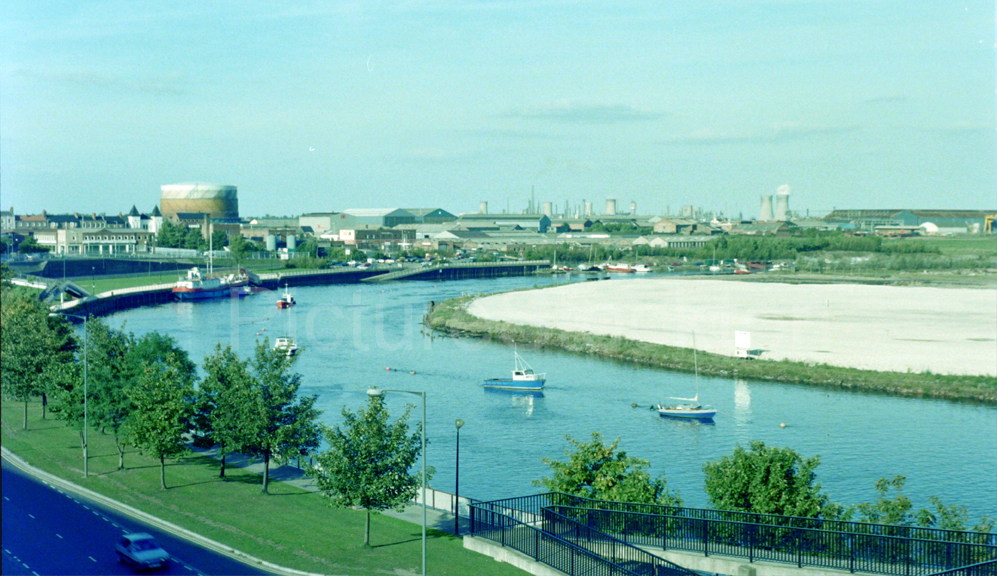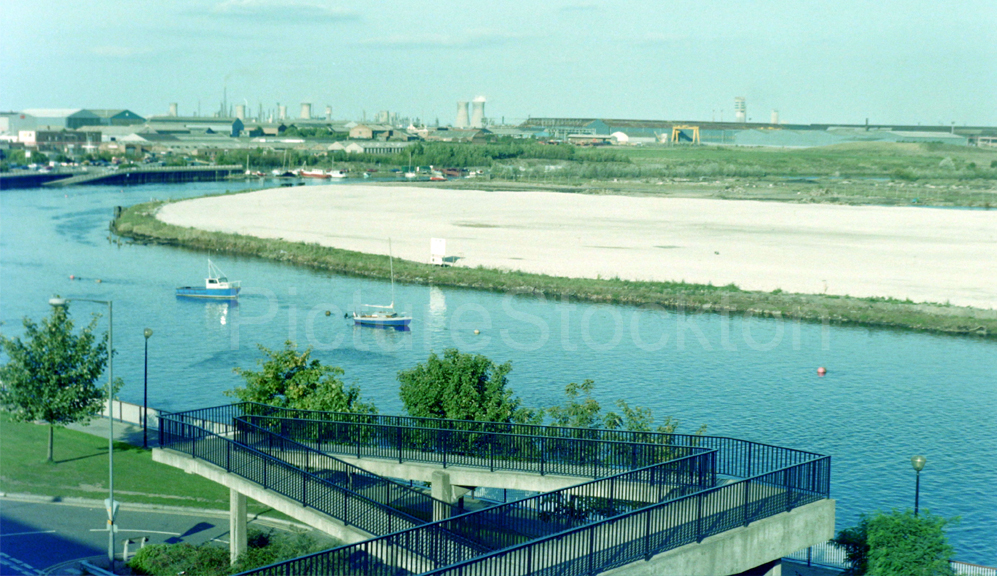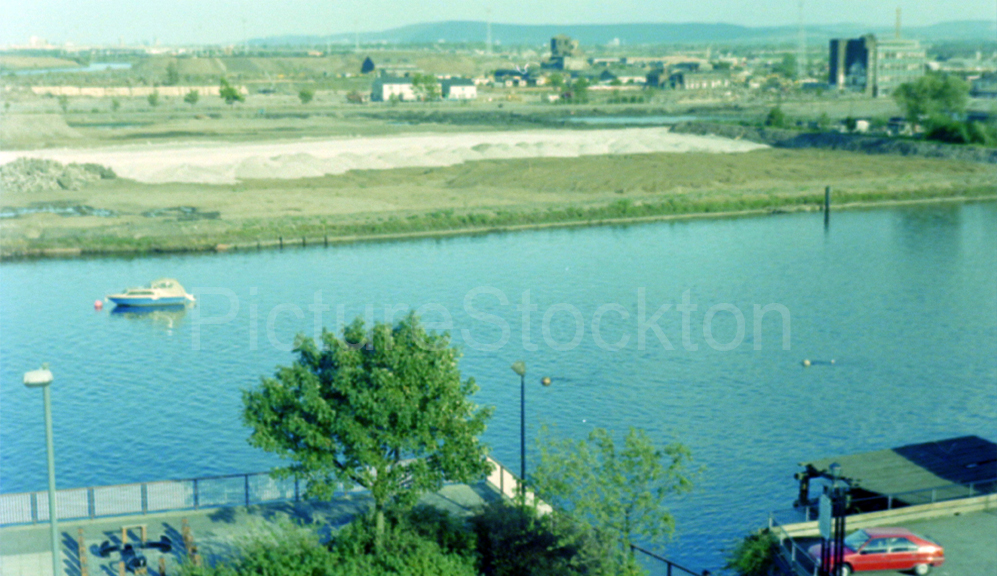These photographs showing the site of Teesdale Business Park before construction, were taken from atop the Castlegate Centre car park. c1987.
Photographs and details courtesy of MF Wilson.





One of the postcards uses the word wharf instead of either docks or quayside, was the wharf a different section of the port? Corporation Quay was at the bottom of Finkle Street, could The Wharf be at the end of Wharf Street?
I have sailed into many ports and harbours throughout the world and there are often different sections that have different facilities depending on the type of cargo, I wonder if Stockton had a similar system.


Images and details courtesy of Anon.
The Vestfold was built at Furness Shipbuilding Co Ltd in Haverton Hill. The keel was laid on 23 July 1930 and the ship was launched on 16 April 1931.
In 1943 when on route from New York for The Clyde carrying a cargo of 17,386 tons of fuel oil and 3 landing craft as deck cargo she was torpedoed by U-268 and sunk. 19 members of the ship’s complement lost their lives. There were 56 survivors.

These two photographs were taken on Friday 24th March 1972. “Tyne Bridge” was a 167,000 tons ore-bulk-oil (OBO) carrier, built at Swan Hunter’s Haverton Hill Shipyard (formerly Furness Shipbuilding). It was heading out for sea trials, guided by 6 tugs. The visible tugs are (left to right) Ayton Cross, Ormesby Cross, and Leven Cross. The top 12 feet of the ship’s mast was hinged to obtain clearance under the transporter. I took the photographs from British Rail’s wagon repair depot, in the one-time Port Clarence goods station.
Photographs and details courtesy of Brian Johnson.